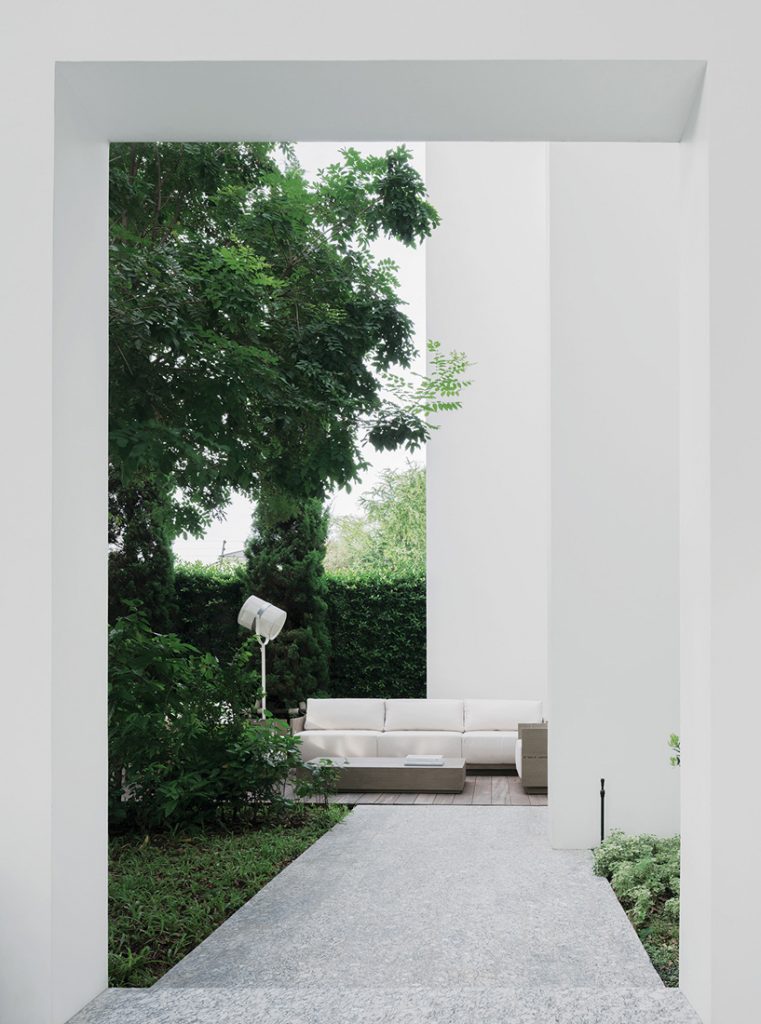The votes have been tallied, the projects pored over, and the awards announced – here are your winners of the 2018 Habitus House of the Year awards.

Boneo House by John Wardle Architects
November 21st, 2018
An initiative that was established to celebrate a decade of Habitus, Habitus House of the Year honours exceptional residential architecture and design completed across the Indo Pacific Region within the past 18 months.
Chair of the Jury, Paul McGillick, Founding Editor of Habitus, and Holly Cunneen, Habitus Editor, presided over an esteemed, hand-selected panel of architecture connoisseurs: Howard Tanner AM, Consultant Architect; Karen McCartney, Architecture Editor / Author / Curator; Narelle Yabuka, Editor Cubes, Indesignlive.sg, Indesignlive.hk and Asia Co-Editor of Habitus; Neil Burley, Founder of Burley Katon Halliday and Anibou; and Raj Nandan, founder, Publisher and CEO of Indesign Media Asia Pacific.
Paul best sums up the judging strategy by saying that the judges were “looking for character. Something special about the house and how it relates to where it is geographically. What is it doing that is really interesting? What is it doing that is really unique?”
Culminating with a cocktail event hosted by StylecraftHOME, Melbourne, on Friday the 16th of November, the program saw six outstanding homes – from a shortlist of just 25 – receive special commendation from the judges.

Truly synonymous with the Habitus spirit, Boneo House “conveys such a strong character,” explain the judges. An addition to an existing 1980s house, the project presents a completely new, refreshingly and artfully connected home. Clad in copper and partly cantilevered, the structure of Boneo House (above) expertly reflects its surrounding landscape and topography.


The esteemed panel of judges found it challenging to separate these two homes, which were equally “resolved and realised”. Profoundly connected with their physical and cultural contexts and taking full advantage of their climates, both residences have outdoor areas that inject life into the home. Further blurring the boundaries between interior and exterior, Gibbons Street House and Artists’ Retreat boast masterful techniques that achieve the ‘poetic of space’.

The interiors of St Vincents Place are subtly contemporary with references to the 19th century era, without being “pastiche,” explained the judges. A result of peerless attention to detail and forming a “world-within-a-world,” the rich material palette is accentuated by ample natural light from a light well and courtyard.

A true balancing act between programmatic demands and outer context, Rabbit Residence is an ensemble of spaces that forms a unified whole. The palette of the house functions as a canvas for the lush tropical garden, a peaceful contrast between the brilliant white scheme and greenery. The fluid floor plan extends to the outside, encouraging residents to not only partake in outdoor activities, but also to experience a “constant state of flux,” says architecture writer Tonkao Panin.

Designed and built as a result of the rapid urbanisation and lack of greenery in Vietnam, D House is a true representation of design’s role: to bring better quality of life to the urban population. Housing three generations of one family, the interior responds to different ways of living and different needs, but blends all these together in a natural manner.
Habitus readers who their votes for the People’s Choice went into the running to win the Ultimate Design Hunter Package, valued at $30,000.
On Thursday 16th November, with a Cocktail Event hosted at the inimitable StylecraftHOME showroom in Melbourne (recently renovated by HASSELL), the inaugural Habitus House of the Year initiative drew to close.
In a room full of architects, designers, contributors, collaborators and friends, editor Holly Cunneen announced the independent jury’s selection of outstanding residential projects accompanied by founding editor Paul McGillick.
Habitus House of the Year was the result of many discussions centred around how to celebrate the milestone that is Habitus’ 10th anniversary. What better way than to pull together a new, annual undertaking?
This year, and each year that follows, Habitus hand-selects 25 recently completed residential projects that exemplify what it means to live through design in Australia, New Zealand and South-East Asia.
The 25 houses selected for the 2018 initiative are the Habitus team’s Habitus Houses of the Year. “You have all done an outstanding job. And according to Habitus, you have all won,” says Habitus Editor Holly Cunneen.

Habitus Editor, Holly Cunneen
The Habitus team extends a special thanks to the Major Sponsors (StylecraftHOME, Sub Zero Wolf, and Zip), Design Hunter Partners (Ajar, Fanuli, Lump, StylecraftHOME, Sub Zero Wolf, The Hour Glass, Tide Design, Top 3, Totem Road, and Tsar Carpets), Trophy Partner (Axolotl) and Media Partners for their support in the inaugural Habitus House of the Year initiative.
View the cocktail event gallery:











.jpg)

.jpg)
.jpg)













A searchable and comprehensive guide for specifying leading products and their suppliers
Keep up to date with the latest and greatest from our industry BFF's!

Following its successful inaugural event in early 2024, the Vietnam International Trade Fair for Apparel, Textiles, and Textile Technologies (VIATT) is gearing up for its next instalment in 2025.

The Man x Machine x Material collaboration by Jarrod Lim and The American Hardwood Export Council explores how generative AI can enhance design processes while also revealing the areas where human intuition remains irreplaceable.

In this episode of Stories Indesign podcast, Timothy Alouani-Roby speaks to former Habitus Guest Editor and Winnings x Habitus House of the Year juror, Sarah-Jane Pyke of Arent&Pyke.

Open, light-filled and speaking directly to contemporary Australian culture, the new Bates Smart-designed Australian Embassy in Washington DC is positioning Australia at the forefront of contemporary design.
The internet never sleeps! Here's the stuff you might have missed

Fermob, the renowned French outdoor furniture brand, has inaugurated its first showroom in Sydney, solidifying its presence in the Australian market.

Vert, an innovative demountable pergola designed for urban greening, is reshaping the way we think about sustainability in urban architecture.